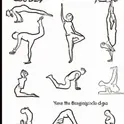The Ultimate Guide to Beginner Hatha Yoga Poses: Improve Your Mind-Body Connection Today
Hatha yoga is a traditional form of yoga that has been practiced for thousands of years.
It is an excellent choice for beginners as it is gentle. And focused on basic poses that build strength, flexibility and balance.
In this guide, we'll cover 10 beginner hatha yoga poses. That will help you improve your mind-body connection. And take your yoga practice to the next level.
Hatha yoga is a traditional form of yoga that has been practiced for thousands of years.
It is an excellent choice for beginners as it is gentle and focused. On basic poses that build strength, flexibility and balance.
Mountain Pose (Tadasana)
Mountain pose is a foundational pose that teaches you proper alignment and posture.
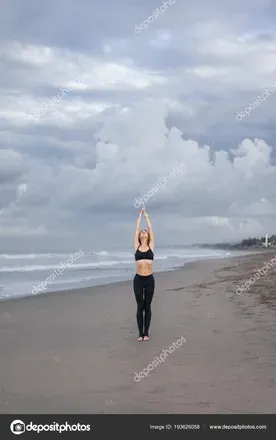
Stand tall with your feet together, arms at your sides and palms facing forward.
Engage your core muscles and press your shoulders down and away from your ears. Take deep breaths and feel the energy flow through your body.
Downward Facing Dog (Adho Mukha Svanasana)
Downward facing dog is a classic yoga pose. That stretches your hamstrings, calves and spine.
Start on your hands and knees, then lift your hips up and back to create an inverted V-shape.
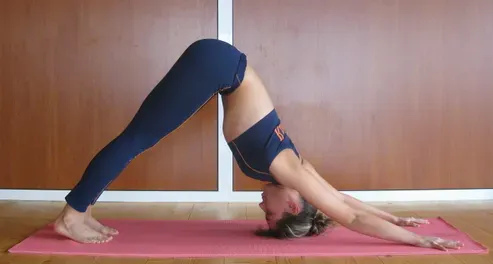
Press your hands and feet firmly into the ground and breathe deeply.
Child's Pose (Balasana)
Child's pose is a restorative pose that helps you relax and release tension.
Start on your hands and knees, then lower your hips back towards your heels and rest your forehead on the ground.
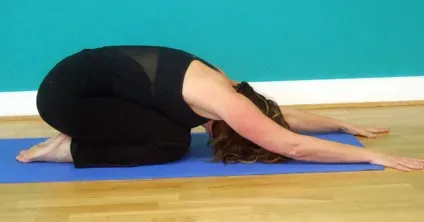
Stretch your arms out in front of you or rest them by your sides.
Warrior II (Virabhadrasana II)
Warrior II is a standing pose that strengthens your legs. And core while improving your balance.
Begin in mountain pose, then step your left foot back and bend your right knee.
Extend your arms out to the sides and gaze over your right fingertips. Repeat on the other side.
Tree Pose (Vrksasana)
Tree pose is a balancing pose that challenges your focus and strengthens your legs.
Start in mountain pose, then shift your weight onto your left foot. And bring your right foot up to rest on your left thigh.
Press your hands together in front of your heart and breathe deeply.
Cobra Pose (Bhujangasana)
Cobra pose is a backbend that stretches your chest and spine. Lie on your stomach with your hands under your shoulders.
Then press into your hands and lift your chest up off the ground. Keep your elbows close to your sides and breathe deeply.
Seated Forward Bend (Paschimottanasana)
Seated forward bend is a gentle pose that stretches your hamstrings and lower back.
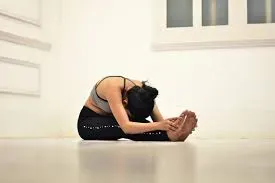
Sit on the ground with your legs outstretched in front of you. Then fold forward from your hips and reach for your toes.
Keep your spine long and breathe deeply.
Triangle Pose (Trikonasana)
Triangle pose is a standing pose that stretches your hamstrings and opens up your hips.
Start in mountain pose, then step your left foot back and turn it out to a 90-degree angle.
Extend your arms out to the sides, then reach your left hand down towards your left ankle and gaze up at your right hand. Repeat on the other side.
Bridge Pose (Setu Bandha Sarvangasana)
Bridge pose is a gentle backbend that strengthens your glutes and lower back.
Lie on your back with your knees bent and feet flat on the ground, then lift your hips up towards the ceiling.
Clasp your hands together underneath your back and breathe deeply.
Corpse Pose (Savasana)
Corpse pose is a final relaxation pose that allows your body to fully relax. And absorb the benefits of your yoga practice.
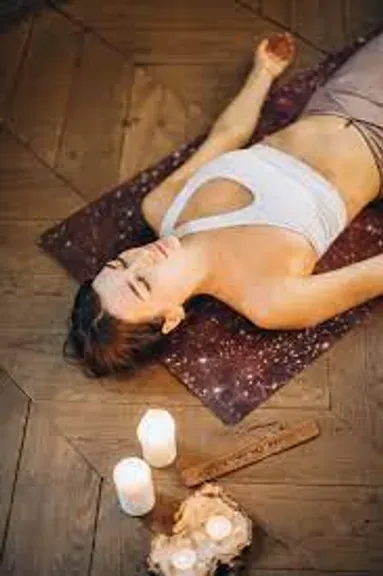
Lie on your back with your arms by your sides and palms facing up. Close your eyes and breathe deeply.
Conclusion
These 10 beginner hatha yoga poses are a great way to start your yoga journey.
They will help you build strength, improve flexibility and balance. Reduce stress, and improve your well-being.
Practicing yoga regularly can also help you develop a deeper connection.
Between your mind and body, which can lead to a greater sense of inner peace and harmony.
Remember to always listen to your body and practice within your limits.
If you have any health concerns, it's always a good idea to consult with your healthcare provider. Before starting any new exercise program.
Also to these poses, there are many other hatha yoga poses that you can explore as you progress in your practice.
Consider joining a yoga class or finding a qualified yoga teacher who can guide you on your yoga journey.
With regular practice and dedication, you'll be amazed. At how quickly you'll start to feel the benefits of hatha yoga in your mind and body. So roll out your mat, take a deep breath, and enjoy the journey!
FAQs:
Can beginners practice hatha yoga?
Absolutely! Hatha yoga is a great choice for beginners as it focuses on basic poses that are gentle and accessible to all.
It's important to start slowly and listen to your body, practicing within your limits. As you progress, you can explore more advanced poses.
How often should I practice hatha yoga?
Ideally, you should aim to practice yoga at least 2-3 times per week to see the best results.
But, even practicing once a week can be beneficial. It's important to find a routine that works for you and stick with it.
What are the benefits of practicing hatha yoga?
Practicing hatha yoga has many benefits, including improving flexibility, strength, balance, and posture.
It can also reduce stress and anxiety, improve sleep quality. And promote a sense of inner peace and well-being.
What do I need to start practicing hatha yoga?
All you need to get started with hatha yoga is a comfortable yoga mat. Comfortable clothing that allows for movement.
And a willingness to learn and try new things. Props such as blocks and straps can also be helpful as you progress in your practice.
Can I practice hatha yoga if I have health concerns or injuries?
It's always a good idea to consult with your healthcare provider. Before starting any new exercise program. Especially if you have any health concerns or injuries.
A qualified yoga teacher can also offer modifications. And adjustments to help you practice safely and comfortably.
How can I find a qualified yoga teacher?
There are many resources available to help you find a qualified yoga teacher. Such as online directories and referrals from friends and family.
Look for teachers who have completed a yoga teacher training program. And have experience working with beginners.
Can I practice hatha yoga at home?
Yes, you can practice hatha yoga at home with the help of online videos or a qualified yoga teacher.
It's important to create a comfortable and peaceful space. For your practice and to set aside dedicated time for your practice.
Hatha yoga is a great way to improve your mind-body connection and enhance your well-being.
With regular practice and dedication, you'll be amazed at the transformation. You'll experience both on and off the mat.
